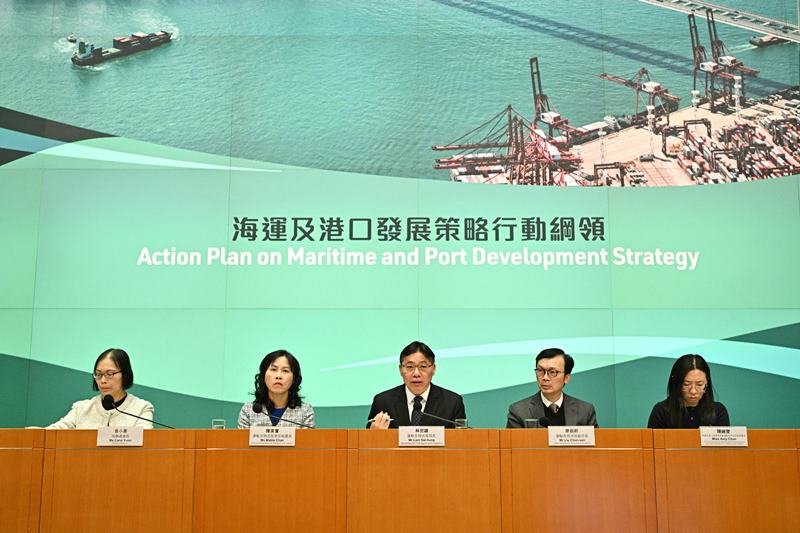The Government of Hong Kong announced the launch of the Action Plan on Maritime and Port Development Strategy, a strategic initiative aimed at supporting sustainable growth within the maritime and port industry.
Mr. Lam Sai-hung, the Secretary for Transport and Logistics, emphasized “With its superior geographical location, unique institutional advantages, free economic system and rich experience of international business and trade, Hong Kong is well-positioned to become the world’s leading international maritime centre (IMC). Our target is to strengthen the competitiveness of Hong Kong Port and accelerate the growth of Hong Kong’s high value-added maritime services cluster with a view to entrenching Hong Kong’s status as an IMC.”
Aligned with the National 14th Five-Year Plan and the Outline Development Plan for the Guangdong-Hong Kong-Macao Greater Bay Area, the Action Plan outlines 10 strategies and 32 action measures. These encompass enhancing port competitiveness, strengthening high value-added maritime services, promoting the Hong Kong maritime brand, and supporting the Hong Kong Maritime and Port Board (HKMPB). The focus is on consolidating and advancing Hong Kong’s position as an IMC.
To augment the competitiveness of Hong Kong Port, the Transport and Logistics Bureau (TLB) will prioritize the development of a green and smart port. Holistically targeting “vessels,” “cargoes,” and “destinations,” the TLB aims to attract global cargoes to Hong Kong Port while addressing challenges related to the global maritime industry’s zero-carbon emission target.
Mr. Lam highlighted “The Action Plan provides important and clear directions for the future development of the maritime and port industry in Hong Kong. We will, in collaboration with the HKMPB, work with stakeholders in the maritime and port industry to implement the strategies and action measures formulated in the Action Plan in phases. To ensure that the strategies can respond to the challenges and opportunities brought about by market changes, we will also continue to review the implementation progress of the relevant strategies and their effectiveness.”

About Hong Kong Port
Hong Kong Port is one of the busiest and most efficient international container ports in the world. It handled nearly 17 million TEUs of containers in 2022. The port provided over 300 international container liner services per week connecting to nearly 500 destinations worldwide.
The locations of the major port facilities, including container terminals, the river trade terminal, mid-stream sites, public cargo working areas (PCWAs) and supporting facilities (e.g. shipyards and typhoon shelters) are shown in the above plan.
In 2022, the Kwai Chung-Tsing Yi Container Terminals handled around 12.9 million TEUs, representing about77% of the port container throughput. The remaining 23% was handled at mid-stream sites, the river trade terminal, PCWAs, buoys and anchorages, and other wharves.
Container terminals (CTs) are situated in the Kwai Chung-Tsing Yi basin. There are nine terminals operated by five different operators, namely Modern Terminals Ltd (MTL), Hongkong International Terminals Ltd (HIT), COSCO-HIT Terminals (Hong Kong) Ltd (CHT), Goodman DP World Hong Kong Ltd and Asia Container Terminals Ltd (ACT). They occupy 279 hectares of land, providing 24 berths and 7 794 metres of deep water frontage.
The water depth of the Kwai Tsing Container Basin is 15 metres. A project to deepen the Basin and its approach to 17 metres has been substantially completed in April 2016. The total handling capacity of the container terminals is over 20 million TEUs per year.

